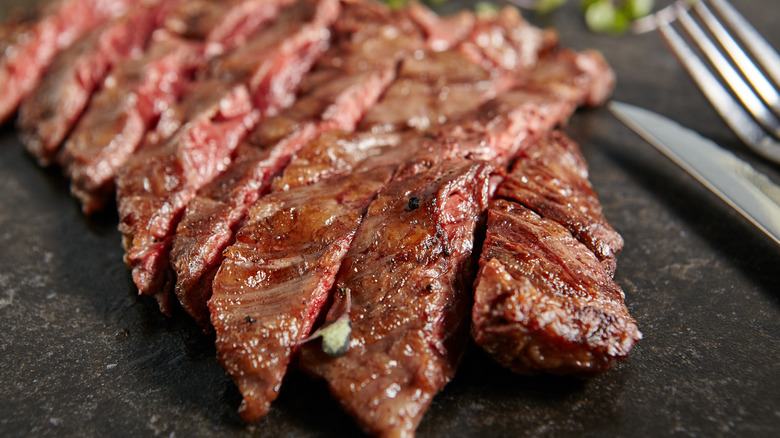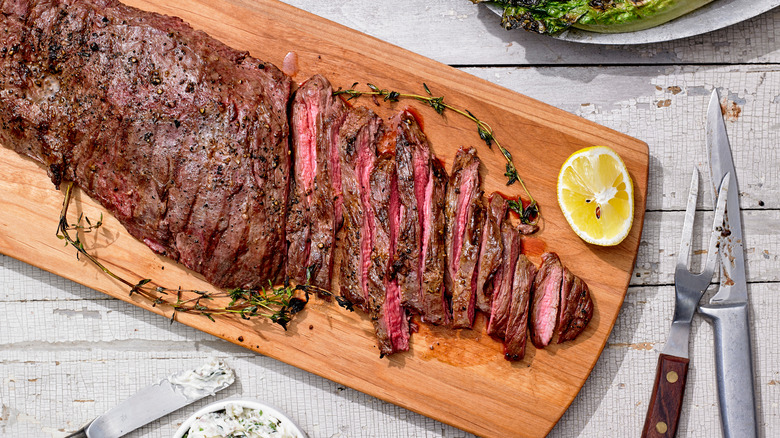The Reason You Should Be Cutting Flank Steak Against The Grain
Nothing hits the spot like that of a juicy cut of beef. According to Pilot Guides, human beings have been eating beef for quite some time. The publication notes that domesticated cattle can be traced back to 8000 BCE, despite it being uncertain exactly when ancient peoples first started eating beef. Since then, folks have gone on to breed cattle like Black Angus, Hereford, Texas Longhorn, and Highlands (via AG Daily).
Nowadays, folks can feast on a number of different cuts of meat. From filet mignon to tri-tip to flank steak, there's a wide variety of steak cuts available. The Spruce Eats notes that among the more popular cuts of beef in the United States is the flank steak. According to the web site, flank steak is particularly popular during grilling season because of its serving sizes. The downside to flank steak? The Spruce Eats tells us that because of its placement on the animal, flank steak is not the most tender cut, despite its great flavor profile. But there's a small workaround that could give you some delightfully tender results if you do it correctly.
Slicing flank steak against the grain can help it achieve maximum tenderness
Kansas City Steak Company suggests that to achieve the perfect medium-rare flank steak you'll need to get a read of at least 130 degrees. Once it is cooked, let the steak to rest for about five minutes to allow the carryover cooking process to occur — as Recipe Tips explains, carryover cooking refers to the process when food continues to cook after being removed from heat.
After it has rested and the internal juices have redistributed, it is time to strategically slice into your delicious flank steak. Food Network suggests cutting into the steak with a "sharp knife held at about a 45-degree angle" and, more specifically, to cut it against the grain. Why is it so important to cut against the grain? Better Homes & Gardens notes that cutting it against the grain will help cut through the fibers, resulting in a more tender cut of beef and providing folks with an easier time at chewing the steak.

